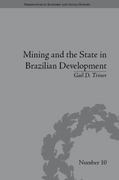Question
1. Mars is the only producer of M&Ms chocolate candies. Mars produces the candies with a total cost function TC(Q) = 10Q, where Q represents
1. Mars is the only producer of M&Ms chocolate candies. Mars produces the candies with a total cost function TC(Q) = 10Q, where Q represents the number of units produced. The demand curve for M&Ms candies is Q(P) = 100 - 2P.
(a) What price should Mars charge to maximize profits? How many units of the product should it sell? Explain.
(b) When Mars is the only producer, what is producer surplus? Consumer surplus? Deadweight loss? Is the market efficient? Explain.
(c) Suppose the government decides to regulate the market for candies by placing a price cap at $20. That is, Mars cannot charge consumers more than $20/unit. What quantity does Mars select? Are consumers better off under this policy? Explain.
(d) Suppose a second firm, Hershey's, enters and competes with a very similar product. Hershey's has a total cost function TC(Q) = 40Q. Mars still has the cost function TC(Q) = 10Q. The government chooses not to regulate prices in the market with Hershey's and Mars. When Mars and Hershey's compete in prices, find the Nash equilibrium. What quantity does Mars produce in the Nash equilibrium? What quantity does Hershey's produce in the equilibrium?
(e) What are the profits to Hershey's and Mars in this equilibrium? How does the consumer surplus in a market with Hershey's and Mars compare to Part (a), when only Mars produced the candies?
Step by Step Solution
There are 3 Steps involved in it
Step: 1

Get Instant Access to Expert-Tailored Solutions
See step-by-step solutions with expert insights and AI powered tools for academic success
Step: 2

Step: 3

Ace Your Homework with AI
Get the answers you need in no time with our AI-driven, step-by-step assistance
Get Started


